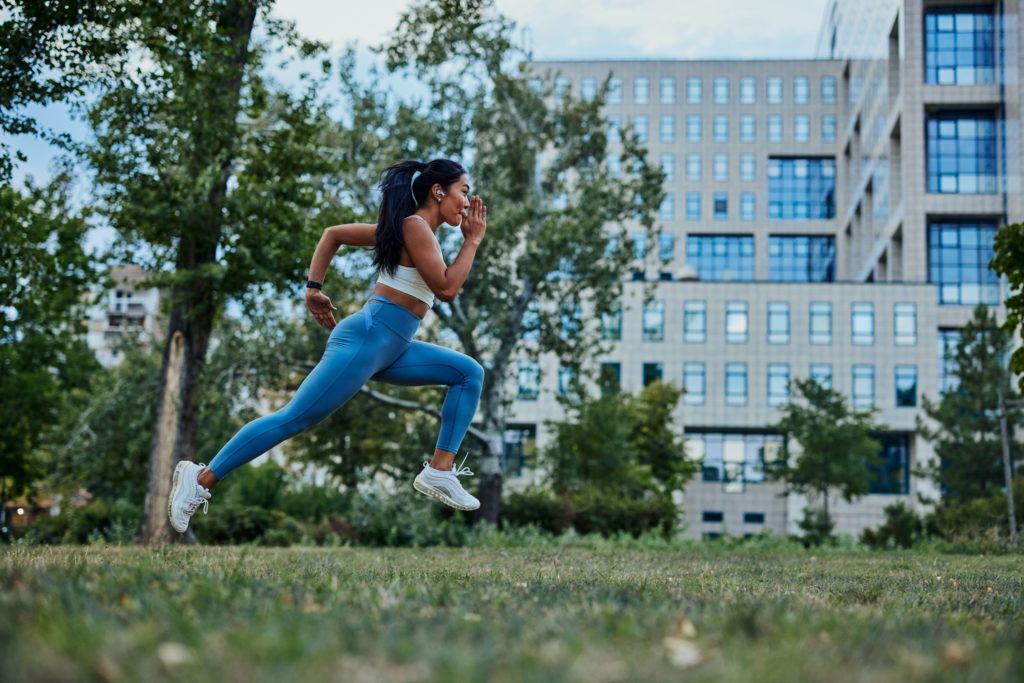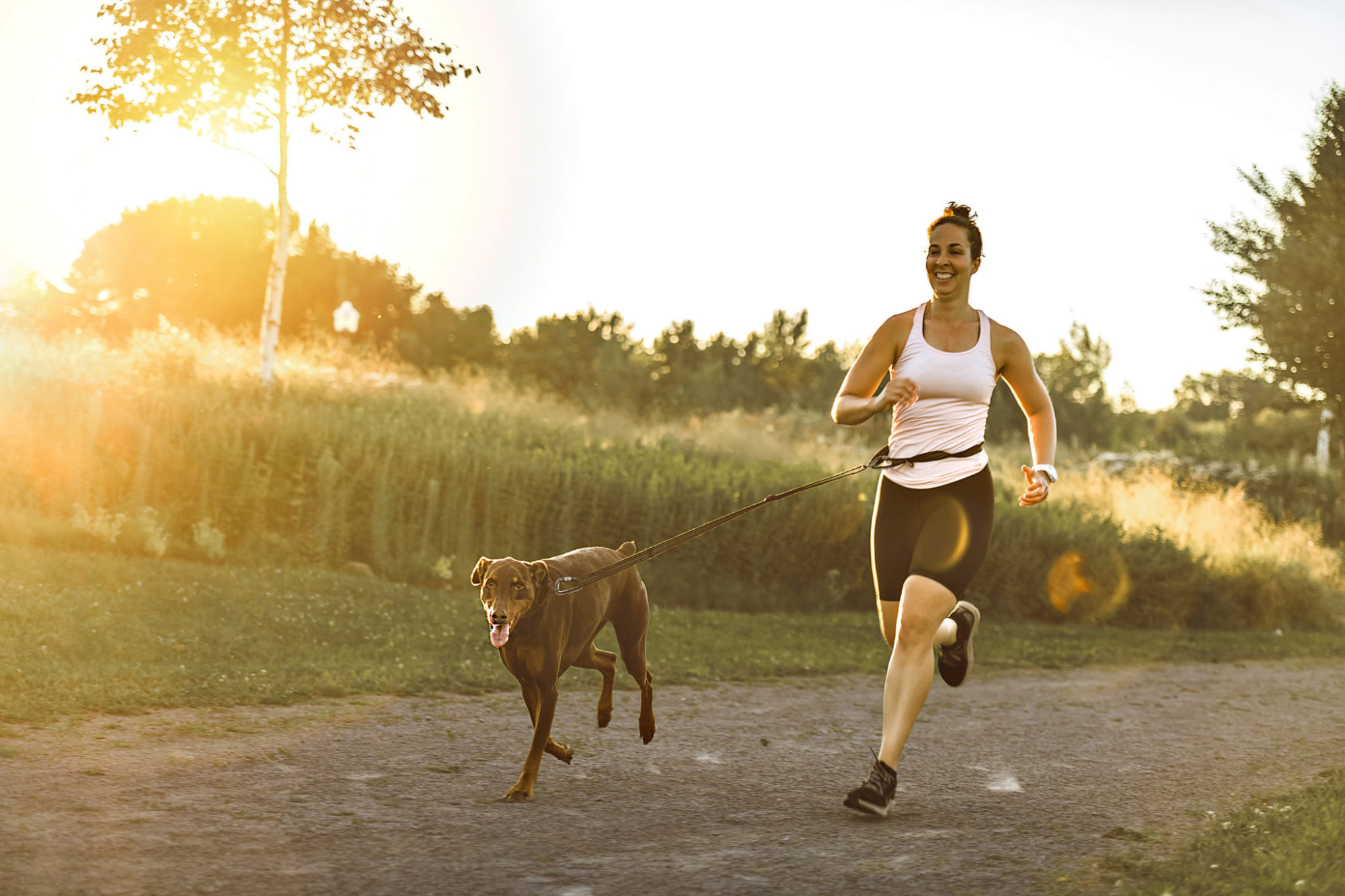Sprint and Become Anti-Frail

“You learn to run like a sprinter, you’ll be a great distance runner.” Alberto Salazar
Sprinting (that is, running fast) is a superb form of training for older adults. Sadly, however, sprinting also poses a high risk of injury for those over thirty-five.
Now, I’m 50 years old, and I sprint two-three times a week without any problems. But this wasn’t always the case. For example, early in my sprinting journey, I tore both of my calves and hamstrings multiple times, and that sucked.
So here’s what I did to transition from always hurt to never injured.
Why Older Adults Should Sprint
But first, why should you risk sprinting at all?
Well, there are few, if any, exercises with as much anti-aging bang for your buck as sprinting.
Briefly:
- Being aerobically fit prevents you from dying prematurely (1). Thus, because all forms of sprint training improve your aerobic fitness, sprint training likely increases your life span (1).
- Sprinting improves and preserves your metabolic and cardiovascular health into old age (2, 3)!
- Sprint training is one of the few forms of exercise that helps you simultaneously lose fat and gain muscle (2).
- Sprinting increases overall athleticism by simultaneously improving endurance, speed, power, agility, and time-to-exhaustion (2).
- Sprinting can help you improve and maintain your bone strength into old age (2, 4).
Why Older Adults Should Not Sprint
There’s only one reason you shouldn’t sprint: the high risk of injury inherent to sprinting.
Hamstring Injuries
By far, the most common injury associated with sprinting is hamstring tears. For example:
- Hamstring injuries account for around 25% of all injuries in athletics (5).
- In rugby union, hamstring injuries are the most common non-impact injury experienced by players (6).
- In Gaelic football, hamstring injuries account for 24% of all injuries (7).
- Finally, hamstring injuries are the most common injury in Australian football, causing the highest number of missed games of all injury types (8).
Calf Injuries
The second most common form of sprinting injury is injured calves. Calf injuries frequently occur in high-speed running, high running volumes, running that involves a large amount of acceleration and deceleration, and running when fatigued (9, 10).
Unfortunately, sprinting can severely damage the calf muscle-tendon structure due to the enormous impact forces involved in sprinting. Thus, sprint-related calf injuries may require surgery and extensive rehabilitation (11). For these reasons, calf muscle injuries must be correctly diagnosed and treated by a qualified physician.
Or better yet, avoided altogether.
Old Age Increases Your Risk of Injury
Unfortunately, older age is a significant risk factor for experiencing a sprinting-related injury. For example, poorly conditioned men between 40 to 60 years old are the highest risk group for calf injury (9).
However, the link between age and injury risk holds even amongst highly trained athletes, as Masters athletes (over the age of 35) have a disproportionately high risk of calf and hamstring injury compared to younger athletes (5, 9).
How I Made Sprint Training a Pillar of my Training Program
So, on the one hand, sprinting is a superb anti-aging exercise that significantly improves your health and delays the physical onset of aging. But, on the other hand, sprinting also puts you at high risk of injury.
What to do?
Below is a brief overview of how I first prepared my body for the stress of sprinting and how I program my sprint training to minimize the chance of injury.
Preparing Your Body to Sprint
If you haven’t done any running in a long time and you are out of shape, you need to prepare your body for the demands of sprinting. How long you need depends entirely on your age, current fitness and strength levels, and your running history.
If you haven’t done any sprinting for a while, I recommend a minimum of three months of preparation before commencing sprint training.
The Nordic Hamstring Exercise NHE
Hamstring tears are not only painful, but they can completely derail your entire training program. Thus, preventing hamstring tears must become a priority if you want to sprint.
I’ve written extensively about using the Nordic Hamstring Exercise (NHE) to prevent hamstring tears. Remarkably, the NHE has become the exercise du jour on many websites and youtube channels, which is great because now it’s easier than ever to access high-level coaching for this challenging exercise!
Unfortunately, while many have praised the NHE for improving athletic performance to near-superhuman levels, fewer have focused on using the NHE to avoid hamstring tears.
Within the context of injury prevention, consistency is critical. For the NHE, your goal should be to perform three sets of five repetitions, twice a week, without getting sore. Concerning the execution of the NHE, lower yourself slowly under control (the eccentric phase of the lift) and then attempt to lift yourself to the start position by strongly contracting your hamstrings (concentric position).
Importantly, there is extensive clinical evidence supporting the NHE for preventing hamstring injury, and I have found that performing the NHE twice a week means no hamstring tears for me.
High-Rep Calf Raises and Jump Rope
I’ve also torn my calves, which was no fun because calf tears are very painful.
Unfortunately, while using the NHE for hamstring injury prevention has plenty of clinical support, I’ve not found any studies that identify the best calf exercises for injury prevention.
Anecdotally, the two exercises that I’ve found most helpful in preventing calf injuries are high-rep calf raises and jump rope.
I use a weight vest to perform high-rep calf raises consisting of three sets of twenty-fifty repetitions on a stair or block. If you’ve never done this exercise before, you’ll be sore. So begin by using your body weight for sets of twenty repetitions, and work up from there.
I also like jump rope training to strengthen my calves for sprinting. Unlike calf raises, skipping forces your calves to adapt to a repetitive impact similar to what you experience during sprinting. Furthermore, jump rope is also a superb conditioning tool that can improve your aerobic and anaerobic conditioning while helping you drop some unwanted fat.
Begin with five one-minute rounds and gradually increase the time of each round as you become accustomed to the load. Finally, work up to performing twenty minutes of uninterrupted skipping at a moderate-to-fast pace.
Sprint Training
The Pre-sprint Warm-up
Performing an appropriate warm-up is essential before commencing any training. Importantly, if the training session is a sprint session, you must perform additional warm-up exercises to prepare your legs for the high demands of sprinting and to avoid the dreaded hamstring or calf tear.
My pre-print warm-up consists of performing three rounds of the warm-up outlined in Table One without a break.
| Pre-sprint dynamic warm-up Routine | |
| Exercise | Reps |
| Heel kicks | 20 per leg |
| Toe Touch (or as close to toe touch as your mobility permits) | 20 |
| Upward Front Kick | 10 per leg |
| Cossack Groin Stretch | 10 per leg |
Once you’ve done your pre-sprint warm-up, the next step is to perform several lighter sprint sets before hitting your top speed sets for the session.
For example, my first sprint is around 30% of maximum pace, my second sprint around 40%, and my third sprint about 50% of my maximal sprinting pace.
Working Sets: Use a Submaximal Approach
Using a sub-maximal approach to sprint training is an excellent way to accumulate high-quality sprint workouts over a long period. Thus, I set my maximum training pace to 70-80% of flat-out sprinting. At this pace, I’m working hard, but I’m still able to maintain good technique for the entire workout, which minimizes the chance of injury.
Because I don’t focus on maximal speed, training volume and consistency become the most critical training variables. In a nutshell, I gradually increased my training volume (i.e., the number of sprints performed per workout) while keeping my training consistency high.
Use Progressive Overload
If you are training to improve your fitness without injuring yourself, you should remember that running fast imposes a significant risk of injury. Further, the benefits of sprint training accrue with months of consistent effort and gradual progression.
To avoid injury, I recommend that you perfect your sprinting technique and let your body slowly adapt to the demands of sprinting.
Begin with a low number of total sprints, perhaps as little as 4-5 sets, consisting of three warm-up sets and 1-2 work sets. Keep your maximal effort work sets at around 60% flat-out for the first few weeks. Then gradually increase your work sets to a 70-80% intensity.
Once you can comfortably maintain this pace for all of your work sets, slowly begin to add more work sets to increase your sprinting volume.
Volume and Frequency
I like to keep my sprint workouts to about twenty-thirty minutes in length, not including warm-ups. For me, this equates to 10-15 sprints, done two to three times per week. This sprinting volume and frequency is adequate and doesn’t wipe me out, which in turn keeps me motivated, injury-free, and therefore consistent.
Constrain your sprinting volume and intensity to a level that allows you to perform quality sprint workouts week in, week out, month in, month out.
Take-Home Message
Sprinting is a superb anti-aging exercise that unfortunately entails a high risk of injury, particularly for older adults.
However, it is possible for you to sprint safely, provided that you have prepared your body for the stress of sprinting, and you apply a sub-maximal approach to sprint training.

References and Further Reading
1. S. Ito, High-intensity interval training for health benefits and care of cardiac diseases – The key to an efficient exercise protocol. World J Cardiol 11, 171-188 (2019).
2. K. Kusy, J. Zieliński, Sprinters versus long-distance runners: how to grow old healthy. Exerc Sport Sci Rev 43, 57-64 (2015).
3. E. T. Poon, W. Wongpipit, R. S. Ho, S. H. Wong, Interval training versus moderate-intensity continuous training for cardiorespiratory fitness improvements in middle-aged and older adults: a systematic review and meta-analysis. J Sports Sci 39, 1996-2005 (2021).
4. T. H. Suominen et al., Regular Strength and Sprint Training Counteracts Bone Aging: A 10-Year Follow-Up in Male Masters Athletes. JBMR Plus 5, e10513 (2021).
5. D. A. Opar et al., Acute hamstring strain injury in track-and-field athletes: A 3-year observational study at the Penn Relay Carnival. Scand J Med Sci Sports 24, e254-259 (2014).
6. J. H. Brooks, C. W. Fuller, S. P. Kemp, D. B. Reddin, A prospective study of injuries and training amongst the England 2003 Rugby World Cup squad. Br J Sports Med 39, 288-293 (2005).
7. J. C. Murphy, E. O’Malley, C. Gissane, C. Blake, Incidence of injury in Gaelic football: a 4-year prospective study. Am J Sports Med 40, 2113-2120 (2012).
8. J. W. Orchard, H. Seward, J. J. Orchard, Results of 2 decades of injury surveillance and public release of data in the Australian Football League. Am J Sports Med 41, 734-741 (2013).
9. K. B. Fields, M. D. Rigby, Muscular Calf Injuries in Runners. Curr Sports Med Rep 15, 320-324 (2016).
10. B. Green, T. Pizzari, Calf muscle strain injuries in sport: a systematic review of risk factors for injury. Br J Sports Med 51, 1189-1194 (2017).
11. J. T. Campbell, Posterior calf injury. Foot Ankle Clin 14, 761-771 (2009).
Acknowledgments
Images created by master1305 and bernardbodo
Disclaimer
The material displayed on this website is provided without any guarantees, conditions or warranties as to its accuracy.
Information written and expressed on this website is for education purposes and interest only. It is not intended to replace advice from your medical or healthcare professional.
You are encouraged to make your own health care choices based on your own research and in conjunction with your qualified practitioner.
The information provided on this website is not intended to provide a diagnosis, treatment or cure for any diseases. You should seek medical attention before undertaking any diet, exercise, other health program or other procedure described on this website.
To the fullest extent permitted by law we hereby expressly exclude all warranties and other terms which might otherwise be implied by statute, common law or the law of equity and must not be liable for any damages whatsoever, including but without limitation to any direct, indirect, special, consequential, punitive or incidental damages, or damages for loss of use, profits, data or other intangibles, damage to goodwill or reputation, injury or death, or the cost of procurement of substitute goods and services, arising out of or related to the use, inability to use, performance or failures of this website or any linked sites and any materials or information posted on those sites, irrespective of whether such damages were foreseeable or arise in contract, tort, equity, restitution, by statute, at common law or otherwise.

Ten Minutes is All You Need
Research has shown that ten minutes of moderate-to-vigorous exercise performed each day is enough to significantly reduce your risk of early death.
- « Previous
- 1
- …
- 31
- 32
- 33



